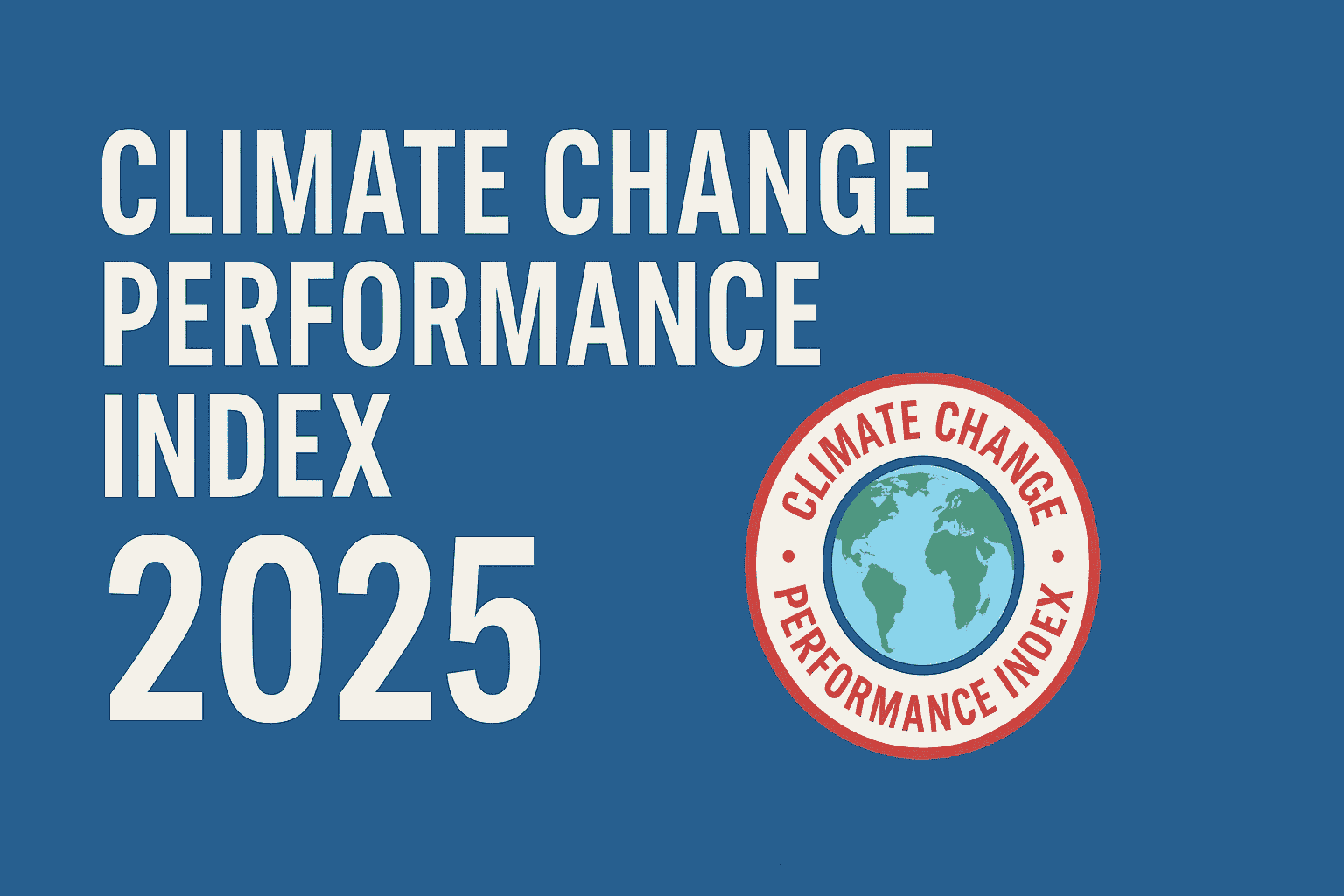Climate Change Performance Index 2025: A Crucial Tool for Climate Accountability
The Climate Change Performance Index (CCPI) 2025, released by Germanwatch, CAN International, and the NewClimate Institute, evaluates 63 countries and the EU on climate action. With only 22 of 64 major emitters making progress, the report underscores urgent gaps in global climate mitigation. This article breaks down key takeaways, India’s performance, and connections to the IPBES Nexus Report—a must-read for UPSC aspirants.
What is the Climate Change Performance Index (CCPI)?
Purpose: Tracks national climate mitigation efforts across four categories:
GHG Emissions (40% weight)
Renewable Energy (20%)
Energy Use (20%)
Climate Policy (20%)
Publisher: Germanwatch, NewClimate Institute, and Climate Action Network International.
Scope: Covers 90% of global GHG emissions.
Key Highlights of CCPI 2025
Global Rankings: Progress vs. Regression
Top Performers:
Denmark (4th): Leads in renewable energy (very high) and climate policy (high).
Netherlands (5th): Strong GHG emissions reduction.
UK (6th): Improved due to coal phase-out and fossil fuel license bans.
India’s Rank: 10th (score: 67.99), excelling in GHG emissions and energy use but lagging in renewables.
Bottom 10: Iran (17.47), Saudi Arabia (18.15), UAE (19.54), and Russia (23.54).
Critical Findings:
Only 22 countries are on track; 42 are failing.
G20 nations (75% of emissions) dominate low ranks, except India and the UK.
Coal dependency remains a roadblock for India despite solar energy strides.
India’s Climate Action: Progress and Challenges
Renewable Energy:
Large-scale solar projects and Rooftop Solar Scheme implementation.
Electric vehicle (EV) push, especially in two-wheelers.
Coal Reliance:
Plans to increase coal production; slow phase-out criticized by experts.
Policy Gaps: Inadequate energy efficiency standards and renewable coverage.
Beyond the CCPI: The IPBES Nexus Report
The Nexus Report by IPBES links five crises: climate change, biodiversity loss, food insecurity, water scarcity, and health risks. Key insights:
Interconnected Challenges:
Example: Expanding farmland boosts food production but harms biodiversity and water resources.
Synergistic Solutions:
Restore carbon-rich ecosystems (forests, mangroves).
Adopt sustainable diets and nature-based urban solutions.
Economic Costs: Unaddressed nexus issues cost $10–25 trillion annually.
Why This Matters for Your Exam Preparation
UPSC Prelims:
Direct questions on indices like CCPI, IPBES, and climate policy frameworks.
Example: “Which organization publishes the Climate Change Performance Index?”
Mains (GS III):
Topics: Environmental governance, renewable energy, and sustainable development.
Essay themes: “Synergistic approaches to climate and biodiversity crises.”
Interviews:
Discuss India’s coal dilemma or global rankings to showcase analytical skills.
Competitive Exams:
SSC, State PSCs: Current affairs on climate indices and international reports.
Internal Links:
Global Biodiversity Framework 2030: Analysis for UPSC
Renewable Energy Policies in India
Stay updated with Atharva Examwise for daily current affairs tailored to UPSC and competitive exams. Bookmark this page for in-depth analyses and exam-focused insights!






